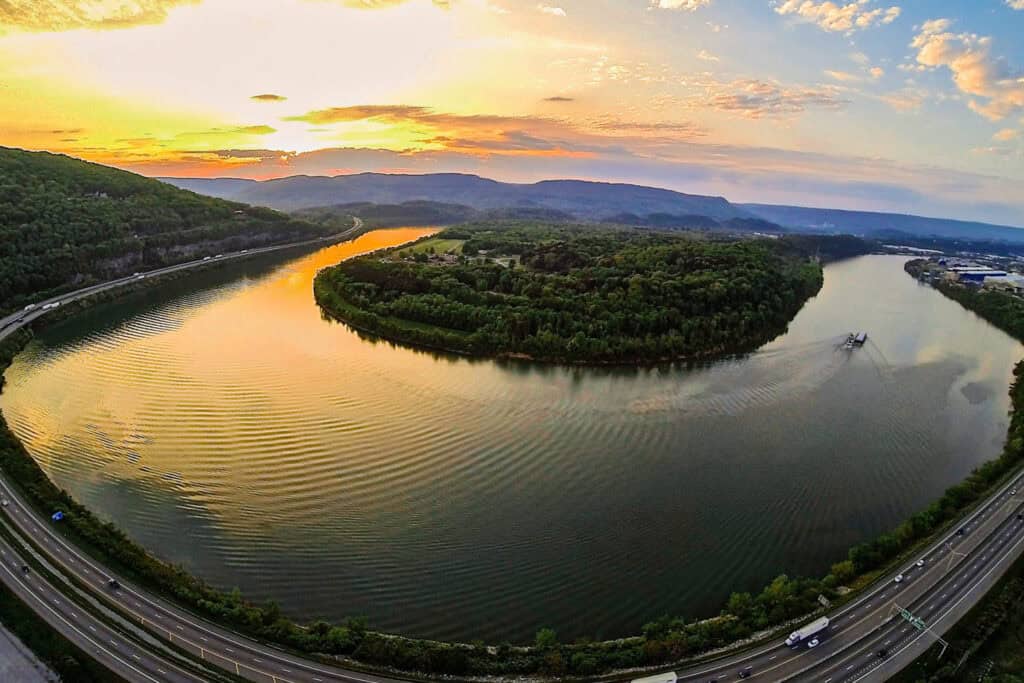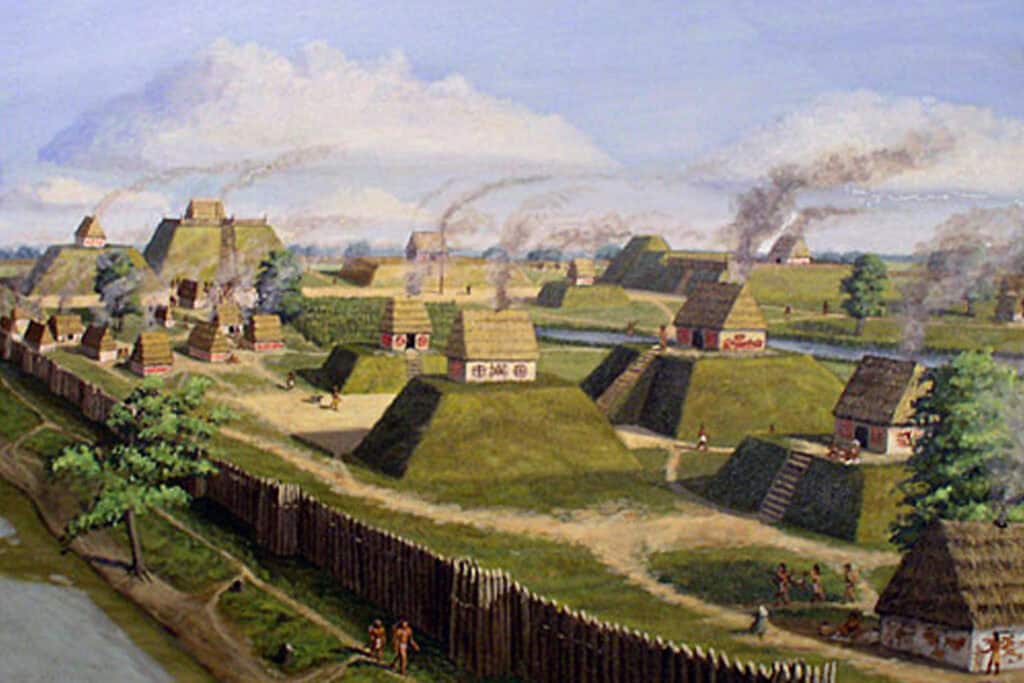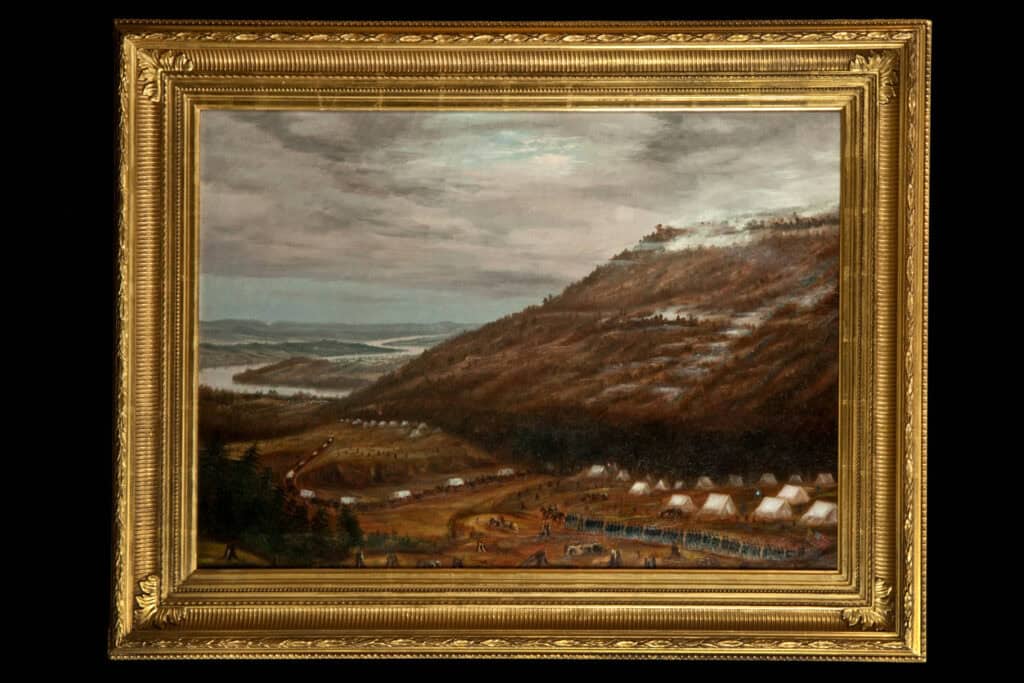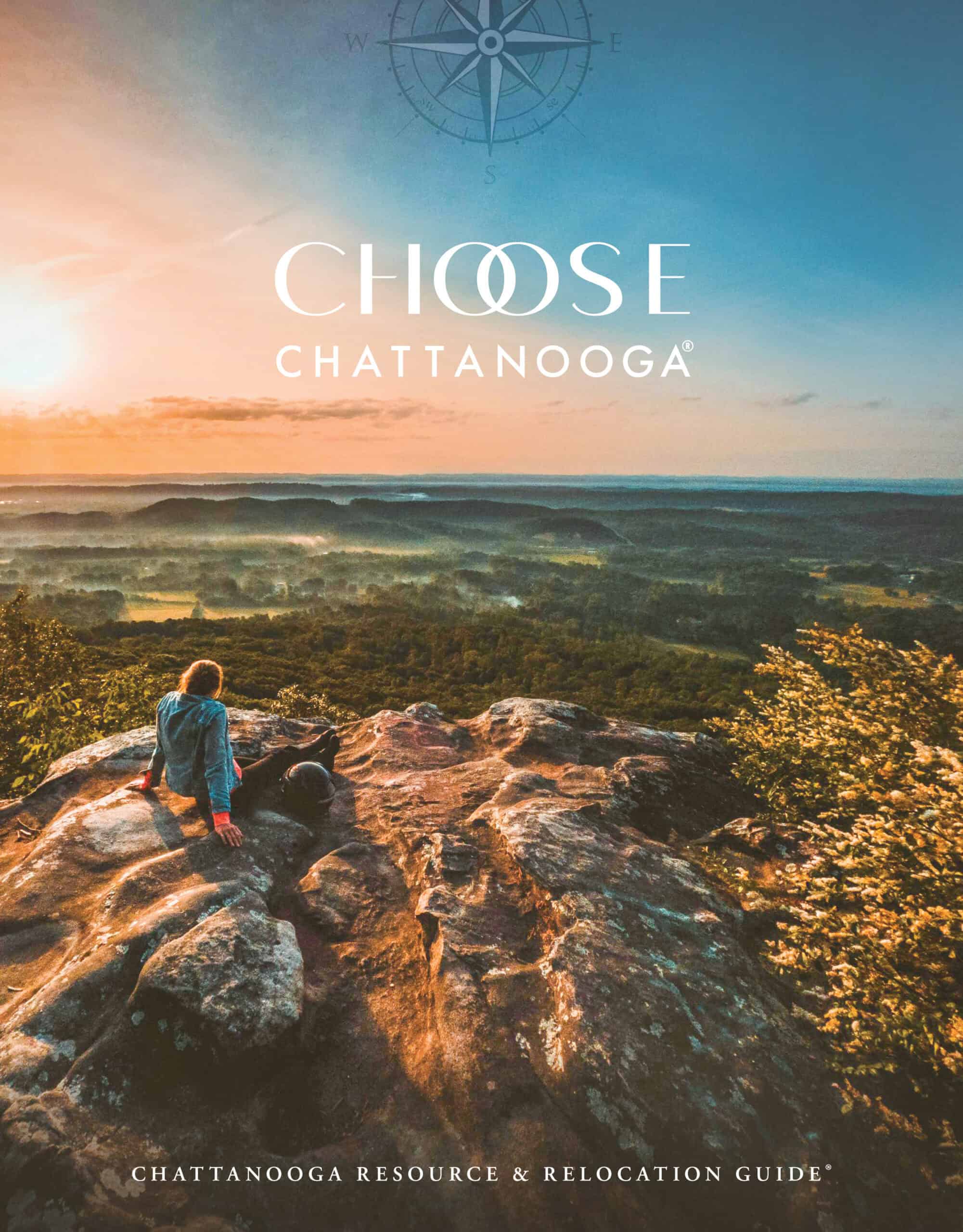As I-24 flows into Chattanooga, it curves along the Tennessee River and offers a stunning view of the Moccasin Bend National Archeological District. While beautiful and an iconic part of the Scenic City’s landscape, Moccasin Bend is also a rich location for sites of Chattanooga history.
According to the National Park Service, Moccasin Bend is “one of the most unique units found in the entire National Park Service system, spanning 12,000 years of continuous human habitation.”

History of Moccasin Bend
Paleo-Indian Period: Moccasin Bend’s rich history begins in the Paleo-Indian Period (10,000 B.C.- 8000 B.C.) when the land housed its first human inhabitants—nomadic tribes that moved into the area because of the rich resources in the valley.
Archaic Period: Later, in the Archaic Period (8000 B.C.-700 B.C.), Moccasin Bend’s inhabitants began to create and develop stone tools. This helped the establishment of permanent villages for the previously nomadic tribes.
Woodland Period: Archaeologists have discovered the most evidence from the Woodland Period (700 B.C.-1000 A.D.). Excavations have uncovered 20 different villages in Moccasin Bend, and archaeologists have found ceramic pottery and signs of the beginning of agriculture.
According to the National Park Service, Moccasin Bend is “one of the most unique units found in the entire National Park Service system, spanning 12,000 years of continuous human habitation.”

Mississippian Period: In the Mississippian Period (900 A.D. -1650 A.D.), the native people began to build large mound-like structures, farm large areas of the land, and develop a socio-political structure. During this period, archaeologists believe that Spaniards under the order of Hernando de Soto or Tristan de Luna may have made contact with one of Moccasin Bend’s villages, Hampton Place.
Trail of Tears: From 1838 to 1839, the U.S. Government forcibly displaced Cherokee tribes to Oklahoma through the Trail of Tears. While they waited to move, they were put in deportation camps, one of which was located at Chattanooga’s Ross’s Landing. Many groups of Cherokees traveled by river along the bend and at least one group passed over land across Moccasin Bend.
Antebellum Slave Trade: During the Antebellum Slave Trade, enslaved Africans were brought to America and forced to work on plantations. Between the 1830s and 1850s, Brown’s Ferry Federal Road was an active route for the slave trade. Many people were also enslaved on Moccasin Bend’s land.

Civil War: In the fall and winter of 1863, Union soldiers encamped on Moccasin Bend and often exchanged gunfire with the Confederate soldiers on Lookout Mountain. Moccasin Bend also housed the Cracker Line, or the Union army’s main supply line.
Archaic Period: Later, in the Archaic Period (8000 B.C.-700 B.C.), Moccasin Bend’s inhabitants began to create and develop stone tools. This helped the establishment of permanent villages for the previously nomadic tribes.
Woodland Period: Archaeologists have discovered the most evidence from the Woodland Period (700 B.C.-1000 A.D.). Excavations have uncovered 20 different villages in Moccasin Bend, and archaeologists have found ceramic pottery and signs of the beginning of agriculture.
According to the National Park Service, Moccasin Bend is “one of the most unique units found in the entire National Park Service system, spanning 12,000 years of continuous human habitation.”
Hiking at Moccasin Bend
Today, Moccasin Bend is a popular spot to explore historic sites as well as take a hike. On the peninsula, two popular hikes include the Blue Blazes Trail and Brown’s Ferry Federal Road Trail.

Blue Blazes Trail
The Blue Blazes trail is a 1.5-mile loop that explores the forest and swamp area of the southern side of Moccasin Bend. This trail is considered an easy hike and, on average, takes approximately a half hour to complete. This trail is open year-round and is great for hiking, running, and biking
Brown’s Ferry Federal Road Trail
Another easy hike, this 1.2-mile trail takes an average of 23 minutes to complete. Best for hiking and walking, this out-and-back trail takes hikers from the middle of Moccasin Bend to the water’s edge, with beautiful views of the Tennessee River.

















